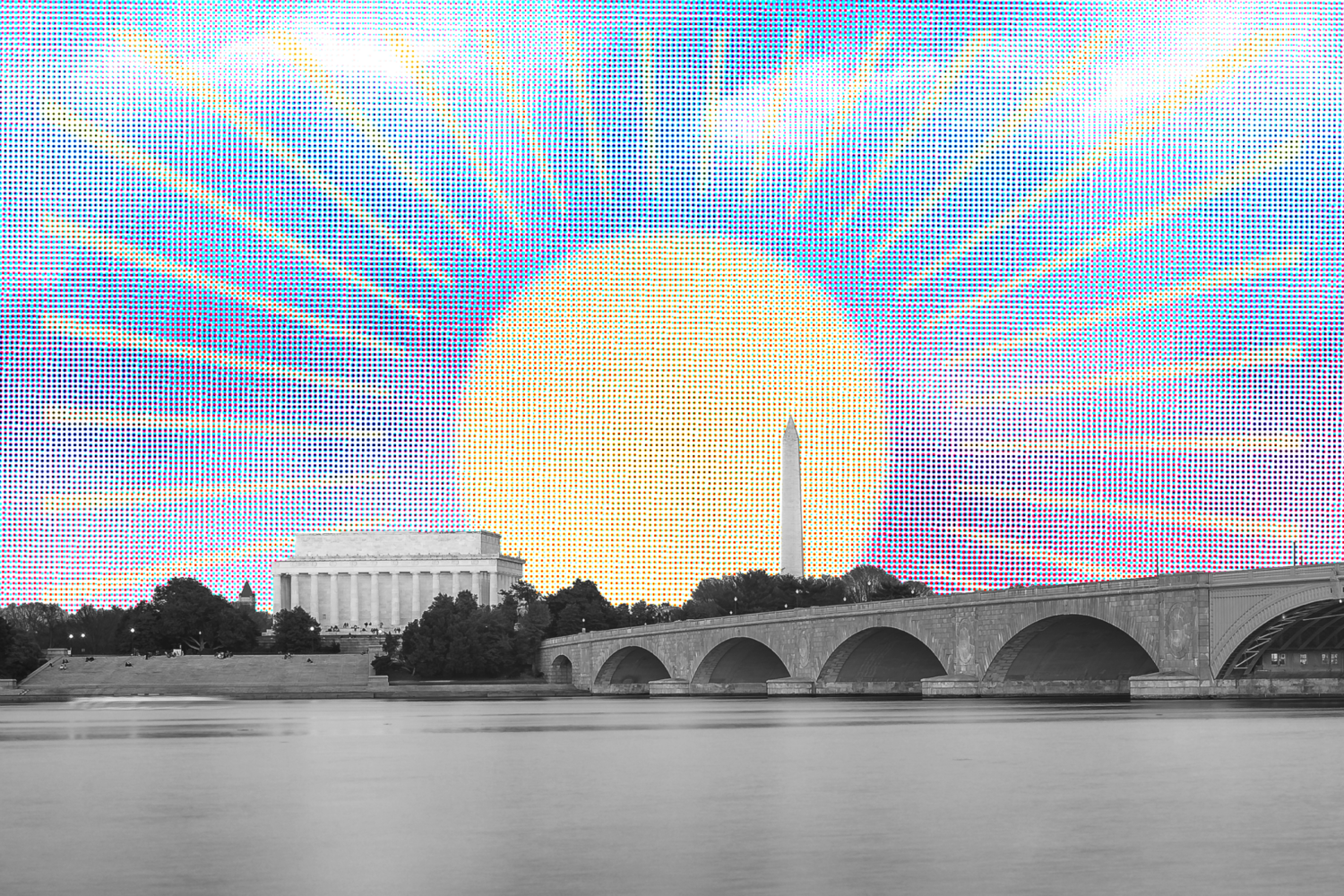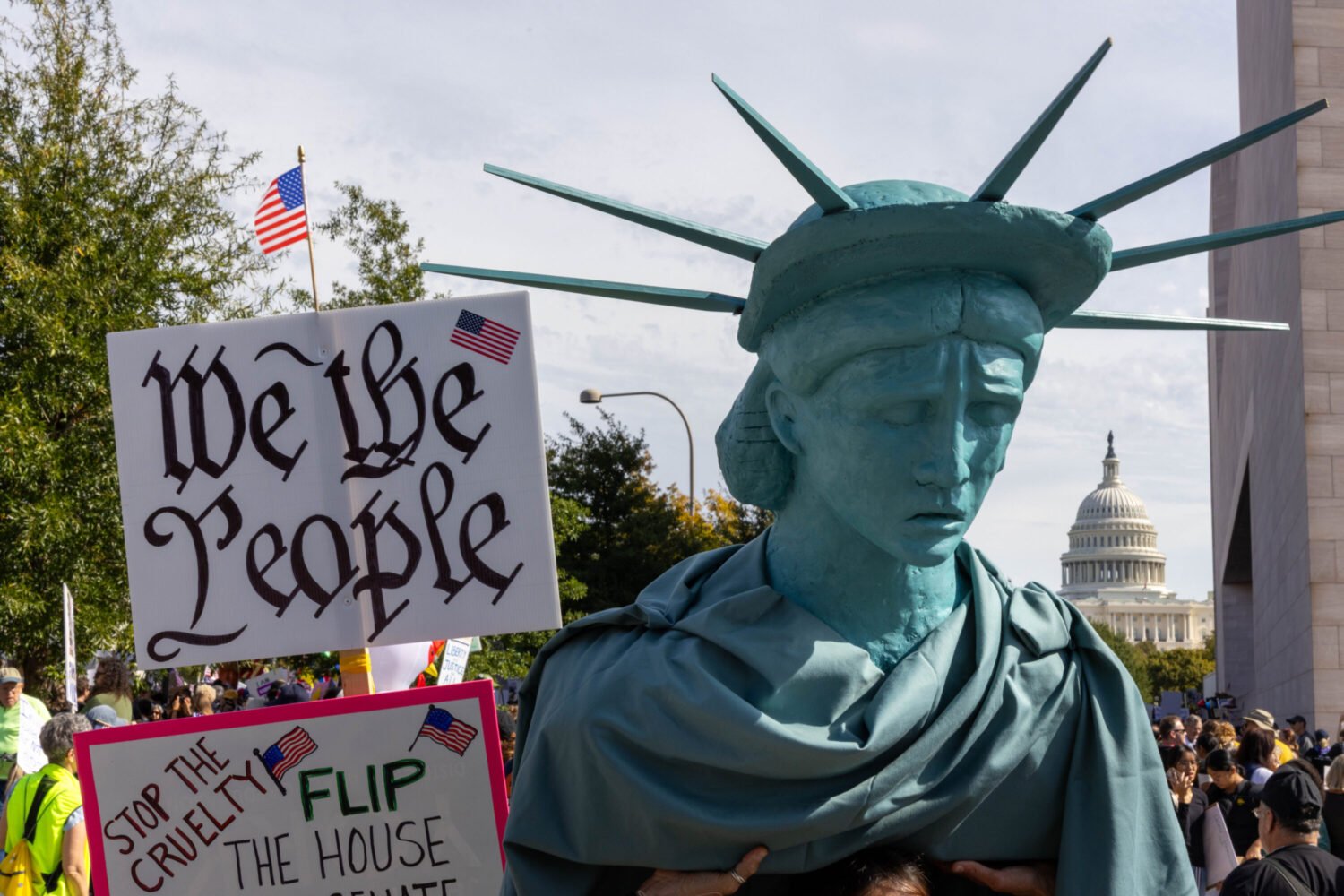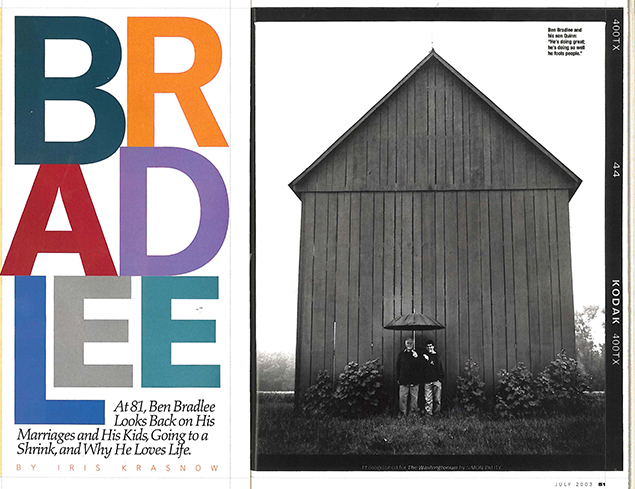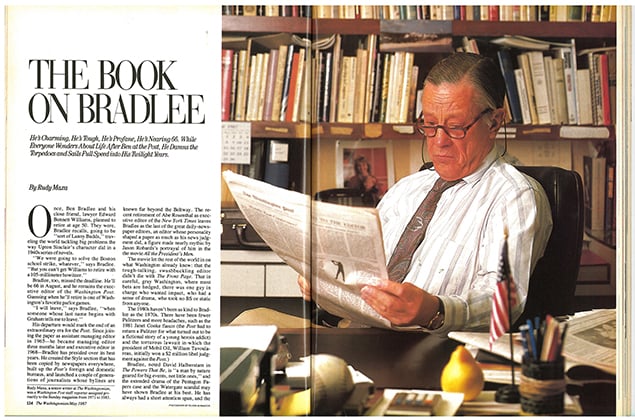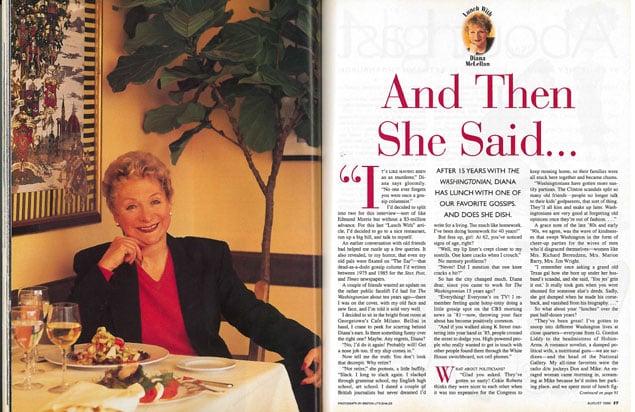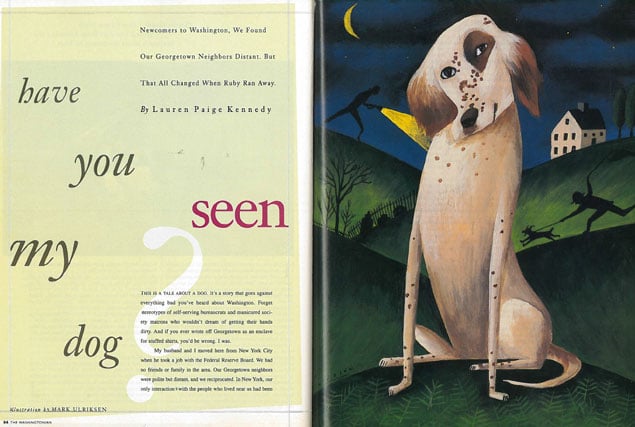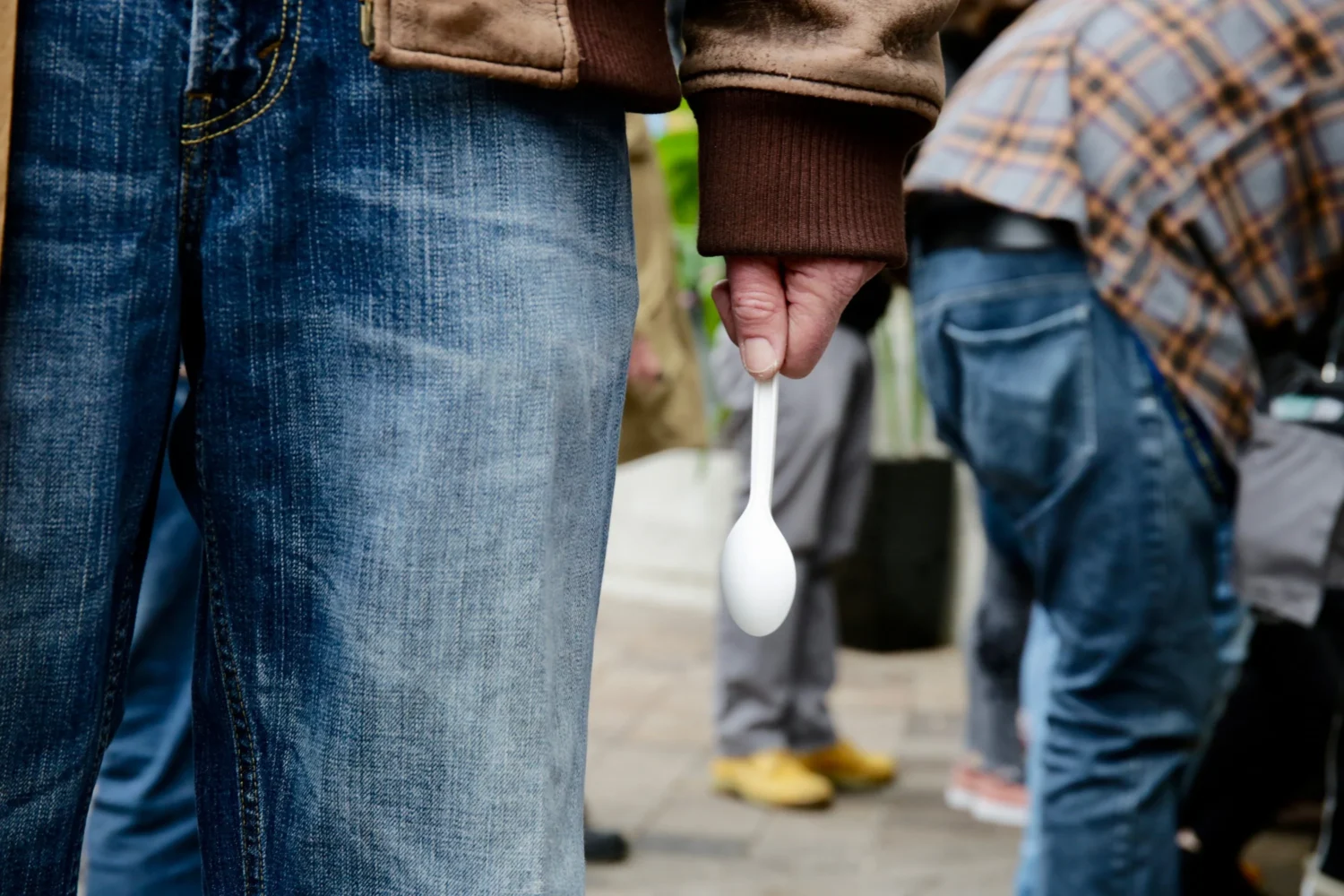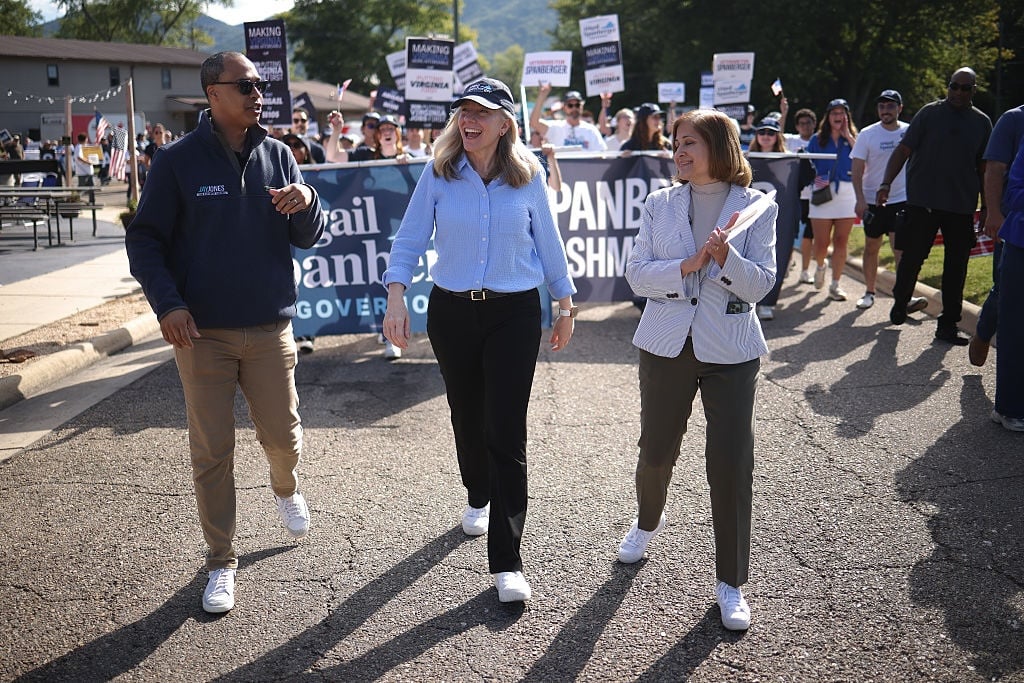The Republicans have been braying loudly this year about the defections of prominent Democrats to the GOP. The hysterical reception given Jeane Kirkpatrick’s conversion was particularly excessive; after all, she had been working for Ronald Reagan for four years.
Meanwhile, the Democrats have been clutching at new opinion surveys suggesting that some of the voters who identified themselves as Republicans or independents in the glow of Reagan’s 1984 success are again thinking of themselves as Democrats now that the President has suffered a few political spills.
Both parties are playing the game of realignment politics. The Republicans’ goal is to prove that the Reagan era has transformed American politics permanently, while the Democrats want to portray it as no more than an aberrational blip on the political screen.
The answer, as usual in such formulations, is probably neither. Nobody in either party is asking the central question about political realignment: Does it matter? Would it make any significant difference in the direction of national policy if the Republicans replaced the Democrats as the dominant party?
• • •
Opinion polls and election returns make it clear that the country is indeed entering an era when the Republicans should be far more competitive. There is no corresponding evidence, however, that the electorate is adopting a new set of beliefs.
You could drive a truck through the holes in the “leading indicators” on which both the Democrats and Republicans seem to be relying. The Democrats would be making a serious mistake, for example, if they believed that their troubles were over because the latest polls showed the movement to Republicanism as something less than the landslide last fall when President Reagan carried 49 states. Public opinion is always volatile; often movement is stimulated by nothing more than a few days of good or bad television for a particular politician or party.
Moreover, long-term trends in party preference are clearly running toward the Republicans. An ABC-Washington Post poll in November 1979, a year before Reagan’s first election, found that 46 percent of the voters identified themselves as Democrats, compared with only 22 percent Republican and 32 percent independent. In February this year, entering Reagan’s second term, the comparable figures were Democrats 41 percent, Republicans 30, and independents 29. The gap between the two parties had narrowed from 24 points to 11.
Quite aside from volatility, public opinion can be based on ignorance. That ABC poll last February found that only 45 percent of the public knew that the Republicans controlled the Senate and only 49 percent that the Democrats controlled the House.
• • •
The message is clear: Politicians and political junkies are too often preoccupied with questions that rarely occur to many of their constituents.
The public’s lack of political involvement or interest devalues the celebrated conversions to the Republican party. The defection of Jeane Kirkpatrick is at least mildly interesting, but it’s not the kind of story that sends voters into the streets yelling to their neighbors, ”Good God, look what’s happened now!”
It is true, nonetheless, that the Republicans have won some notable converts, including three who could become serious contenders for the governorships of major states next year.
One is Bob Martinez, the mayor of Tampa, Florida, who left the Democratic party for the Republicans in the fall of 1983 and is now the leading candidate for the Republican gubernatorial nomination in Florida next year, when Democrat Bob Graham is legally barred from seeking a third term.
A second potentially big score for the Republicans was the conversion of former US congressman Kent Hance of Texas, who changed parties to run for governor next year against Democratic incumbent Mark White. Hance is trying to follow the path laid down by Phil Gramm, one of those notorious “boll weevil” Democrats who saved Reagan’s tax and budget plans in 1981. Gramm switched to the Republicans early in 1983 and won a Senate seat in a walk last fall.
And a third is William G. Lucas, the Wayne County, Michigan, county executive, whose conversion has been greeted with particular enthusiasm by the Republicans because he is black. If Lucas wins the Republican nomination for governor of Michigan, he, too, will face an incumbent Democrat, Jim Blanchard.
• • •
Most knowledgeable Republicans consider these political defectors a mixed blessing. Some Republicans who have been laboring in the vineyard resent the attention being paid to people they see as opportunistic late arrivals. There has been some grumbling among Republican regulars in Florida, for example, about the public embrace of Martinez by the White House, which turned over the Florida Reagan-Bush campaign last fall to Martinez’s political adviser, Mac Stipanovich.
And in Texas, the early reaction suggests that Kent Hance won’t be handed the Republican gubernatorial nomination without a primary fight.
The weakness in relying on converts for the top of the ticket is that it superimposes them on the party structure without building a foundation of state and local organizations that can sustain other candidates. If the defector-candidate loses, the party is no better off than it was before; quite possibly, it is worse off. Indeed, it might be inferred that the enthusiasm with which the White House and national Republicans welcomed Hance and Martinez is the best measure of their own failure to produce competitive statewide candidates.
And no one would question the proposition that the switch by Lucas has given the Republicans the kind of black leader they never could have expected to evolve through normal political development.
The most encouraging sign of new vigor within the Republican party may be less the big-name prizes—the Kent Hances and Jeane Kirkpatricks—than the several dozen state legislators, sheriffs, district attorneys, county commissioners, and the like who have switched to the GOP in such states as Florida, Texas, Louisiana, and the Carolinas.
• • •
Defections aside, there is real evidence of movement toward the Republican party among voters who have been reliably Democratic for generations. The best measure of any political situation is simply the vote. For Democrats, there was almost no encouraging news in the 1984 returns, beyond the fact that Walter F. Mondale managed to hold the usual Democratic share of Jewish and black voters.
Analyses of returns and exit polls showed that 55 to 60 percent of voters under age 30 backed Reagan. Equally important, as many young voters identified themselves as Republican as Democratic. In the youngest group, self-identified Republicans actually outnumbered Democrats.
The figures among southern white voters of all ages were overwhelming. Reagan defeated Mondale two to one among whites in most of the region, better than three to one in some Cotton South states. Exit polls showed a correspondingly dramatic change in the number of whites who considered themselves Republicans rather than Democrats.
One of the most revealing measures of the pattern was a post-election analysis of Texas done by V. Lance Tarrance, the Houston-based polling expert. He found that 25 percent of all Texas voters in the 1984 election cast straight-ticket Democratic ballots, and—this was the stunner—22 percent cast straight-ticket Republican ballots.
There is nothing surprising about straight-ticket voting among Democrats in any southern state, particularly one with a significant population of blacks and Hispanic-Americans. But Tarrance found straight-ticket Republican voting among groups such as young professionals who traditionally have split their tickets.
There is, of course, a hazard in paying too much attention to the results of the 1984 election, particularly in the South, where the “all-liberal ticket” of Fritz Mondale and Geraldine Ferraro was too much to swallow. Indeed, the Democrats’ choice of Mondale and the kind of campaign he conducted caused extraordinary changes in political patterns.
Peter Hart, Mondale’s polling consultant, cites what happened in Alabama. A survey in December 1983 found 53 percent of white voters describing themselves as Democrats and 24 percent as Republicans. By election day of 1984, the split became Democrats 29 percent and Republicans 41 percent—a shift of 41 percentage points in eleven months.
Two obvious inferences can be drawn. One is that Mondale was pure poison to those voters—no secret to anyone who followed the campaign. The other is that many voters don’t think of their party identification as lasting or firm. People who think of themselves as Republicans are more inclined to vote Republican, and those who think of themselves as Democrats are more likely to vote Democratic. But given the right encouragement or provocation, voters walk away from ”their” party in droves.
• • •
If voting behavior is the best measure of where the country is, politically at any given moment, trends in registration are probably the best indicator of where the country is going. Again, the direction is clearly toward the Republicans. That’s most apparent in the South, where more voters who have been behaving like Republicans, at least in presidential elections, are showing a willingness to accept the name as well as the game.
Take Florida. As recently as 1982, registered voters who were enrolled as Democrats outnumbered Republicans two to one. Sometime this year—perhaps this summer—Republican registration gains will bring their party enrollment to 2 million against 3 million Democrats.
A campaign instituted by Republican state chairman Jeanie Austin immediately after the election produced 27,000 new registrants as an “inaugural gift” to Reagan. A second phase is expected to produce the 80,000 more needed to reach that 2 million figure.
The Republican gains in Florida are generally representative of most of the Sun Belt. Some new Republicans, particularly in southwest Florida, have moved into the state from the Midwest and have been Republicans all along. Some come from the increasing politicization of the Cuban-American community in Miami. BUt most are simply bringing their party registration into line with their voting behavior, at least in national elections.
Moreover, political professionals in both parties in Florida agree that a “tipping point” is at work, Once the Republican registration reaches 40 to 45 percent in a community, it often swings quickly to a Republican majority.
One reason—and this is critical all across the region—is that once a substantial party base has been built, there is a greater likelihood of Republican primary contests for local offices. Southern Democrats always argue that their local supremacy cannot be challenged because “people want to vote for sheriff” and, as a practical matter, can do that only in Democratic primaries. Republicans in Florida and other pockets across the South—in states as important as Texas and North Carolina, most notably—are beginning to punch holes in that assumption.
• • •
One facet of southern realignment is the sharp racial division between the two parties. Southern blacks voted nine to one or better for Mondale; southern whites went for Reagan. The pattern is even clearer in those few states where voters register by party.
In Louisiana, for instance, there were 100,000 new or changed registrations in 1984. The Republicans captured just under 60 percent, and the Democrats and independents split the remainder. The Democratic gain was entirely attributable to a sharp rise in black-voter participation, inspired largely by Jesse Jackson’s campaign in the Louisiana presidential primary. In fact, the Democrats suffered a net loss of 2, 175 white registrants during the year.
The Republicans are still a long way from becoming the dominant party in Louisiana, where registered Republicans still make up only 12 percent of the electorate. But that is a fourfold gain from eight years ago, and the party has been gaining in a geometric progression—fast enough that Republicans could be fully competitive in much of the state in another eight years.
• • •
In some respects, the best long-range indicator of change in the electorate might be voters’ perceptions of the strengths and weaknesses of the two parties. Once again, the polling data seem to point largely to Republican progress.
When poll-takers ask which party “would do the better job” with this problem or that, we now find the Republicans rated higher than the Democrats on virtually every economic issue. They are even rated as good as the Democrats in dealing with unemployment—a heresy to the generation of Americans who grew up believing that “Republicans mean hard times.”
That kind of survey data shouldn’t be taken too literally. The volatility factor is apparent; when the country was skidding into recession three years ago, the figures on unemployment showed a significant preference for the Democrats.
The ignorance factor is there as well. For a long time the polls failed to give Reagan as much credit as he deserved on the inflation issue; current surveys fail to give him as much blame as he deserves on the deficit issue.
• • •
At this point, the whole theory of the thoroughgoing political realignment breaks down.
At the national level, there are no issues on which to sort out politicians or parties in the way they could be sorted out during the New Deal on the basis of their positions on the basic social programs such as Social Security, or during the civil-rights revolution on the basis of their attitudes toward the federal role in ending racial segregation.
To be sure, some emotional issues still color the fringes of the political debate, abortion and capital punishment being the most obvious. And serious people still differ on national-security questions as cosmic as disarmament negotiations and as specific as support to the Contras in Nicaragua.
But barring an international crisis, this is an era in which the condition of the economy is paramount for the voters—and the political debate centers on methods rather than directions. That’s true at the state and local levels as well; there is a direct correlation between the outlook for most incumbent governors next year and the job and tax pictures in their states.
But any meaningful political realignment on the basis of these issues is impossible because Republicans and Democrats alike lurch from one position to another with every shift in the political wind.
After three generations as the party founded on the concept of the balanced budget and fiscal responsibility, the Republicans under Ronald Reagan have become the party of deficits—except, that is, for the Republicans in the Senate who are trying to change all that. And except for some Republicans in the House. And except for most Republican governors.
And there is no policy consistency among Democrats as they grope for a way to define themselves in more politically attractive terms. The defense issue is a case in point: A little more than a year ago, the ostensibly serious candidates for the Democratic presidential nomination were quibbling about whether the defense budget should be increased by 4 or 5 or 6 percent above inflation. Today the argument centers on whether the Pentagon should be given enough to cover inflation.
• • •
So there may be a great deal less than meets the eye in political realignment.
It is likely that over the next decade, more voters will identify themselves as Republicans. But it would be naive to believe that the swing toward Republicanism will continue at the same pace if, for example, the economy goes sour before the 1986or 1988 elections.
A genuine political realignment would entail a broad and deep change in public opinion on important issues, not simply a response to a commanding national leader. Ronald Reagan clearly has played an important role in making it more desirable for Americans to think of themselves as Republicans.
Does anyone imagine that the Republicans would have won 49 states and 525 electoral votes if their nominee had been George Bush or Jack Kemp?
This article appears in the July 1985 issue of The Washingtonian.



